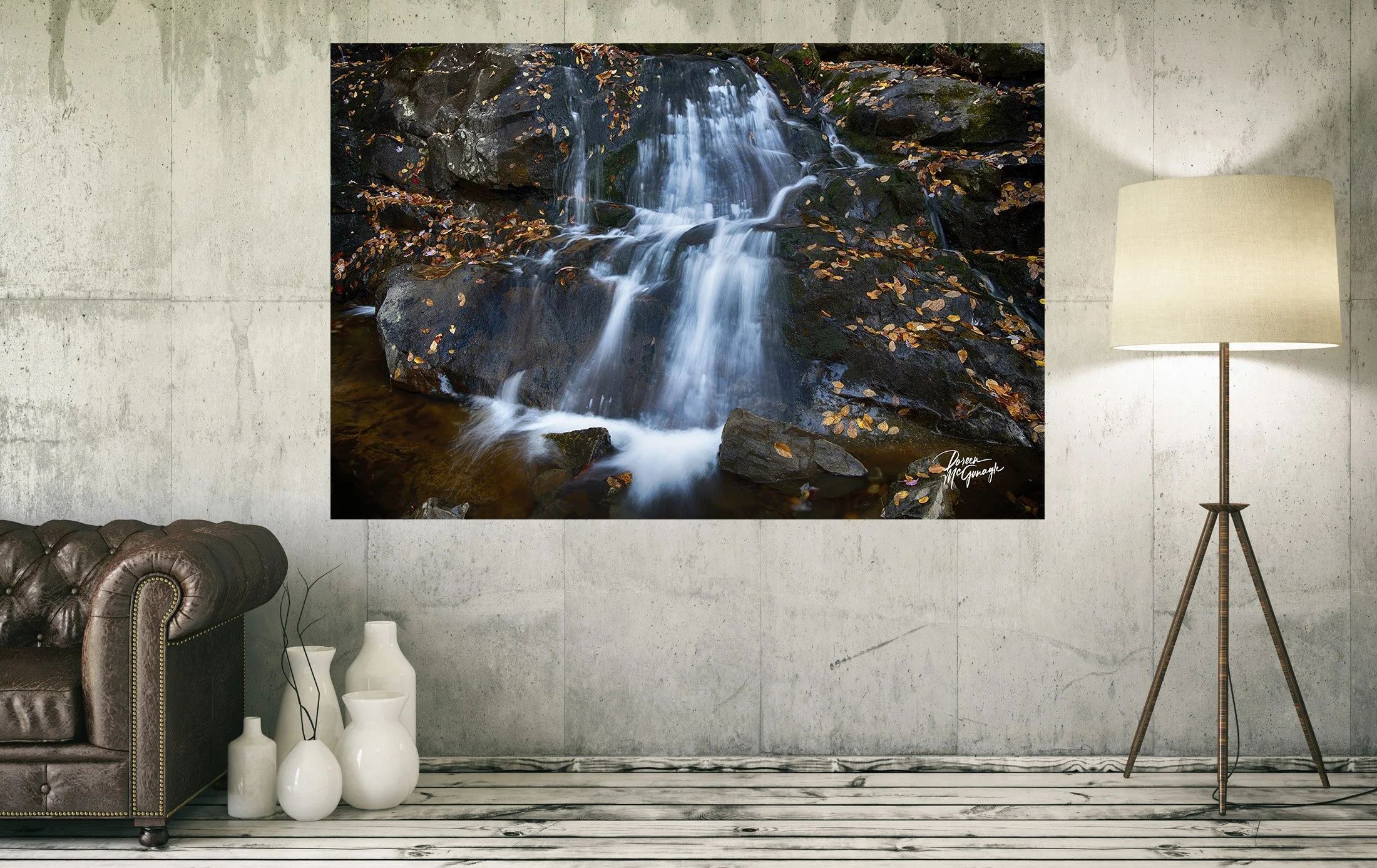The Art of Capturing Water in Nature Photography: A Masterclass
Water, in its many forms, has long captivated the lens of photographers worldwide. From serene lakes reflecting the sky to the dynamic ebb and flow of ocean waves, water is an elemental force that brings life, motion, and tranquility to photographs. In my latest fine art collection, Majestic Power of Water, I delve into the emotional and physical beauty of water, capturing its power, elegance, and peacefulness.
In this post, I’ll share some insights from this collection and provide tips on how you can master the art of capturing water in your nature photography.
1. Finding Stillness in Reflection
One of the most mesmerizing aspects of water is its ability to mirror the world around it. Whether it's a placid lake at dawn or a puddle on a quiet path, reflections offer a magical opportunity for storytelling in photography.
How to Capture Water Reflections:
Time of Day: Early morning or late afternoon is ideal for shooting reflective water landscapes. The soft, diffused light during these times creates beautiful, natural reflections.
Still Waters: Calm days with little wind provide a natural mirror for capturing perfect reflections.
Perspective: Get low to the water’s surface to amplify the reflection, creating symmetry between the sky and the water below.
In Serenity at Dusk, part of my new collection, the reflection of palm trees on a quiet lake at twilight embodies the perfect harmony of sky and water. The key to this shot was waiting for the stillness of dusk when the water was calm, and the light was just right.
Serenity at Dusk
Serenity at Dusk | CR 8940-08 c2023 | Florida | Learn More
“Serenity at Dusk" is a captivating and evocative fine art nature print that transports you to the heart of a serene Florida landscape. It offers a stunning portrayal of Florida sunset photography. This limited edition print invites you to explore the intricate beauty of nature in twilight, taking you on a visual journey that transcends time and place.
2. Capturing the Rhythm of Waves
Waves bring energy and movement into an otherwise static photograph, drawing the viewer's eye to the dynamic nature of the scene. Whether you’re photographing a stormy sea or gentle ripples, capturing the rhythm of water requires patience and technical precision.
How to Photograph Water Movement:
Shutter Speed: Use a slow shutter speed to create a soft, silky effect that turns moving water into an ethereal flow. A shutter speed between 1/4 second and 30 seconds works well, depending on the speed of the water and the effect you're trying to achieve.
Tripod: A stable tripod is essential for sharp, clear images when using slow shutter speeds.
Timing: Timing is crucial when photographing waves. Anticipate the crest of the wave or the moment when it gently retreats, leaving behind a foamy trail.
One image in the Majestic Power of Water collection highlights the beautiful rhythm of waves crashing against a rocky shore. The slow shutter speed softened the roughness of the waves, turning them into flowing streams of light against the hard rocks—a juxtaposition of nature’s strength and grace.
3. Mastering the Movement of Waterfalls
Photographing waterfalls can be both challenging and rewarding. Waterfalls have an intrinsic energy, and when captured properly, their power and beauty can almost leap off the print.
Ethereal Serenity
Great Smokey Mountains Ethereal Serenity 9266-48 c2023 | Tennessee | Learn More
Step into a world of enchantment with our breathtaking fine art image captured by our talented Fine Art Nature Photographer. "Ethereal Serenity" transports you to the heart of the Great Smoky Mountains, where a mesmerizing waterfall glistens in the soft embrace of early morning light.
How to Photograph Waterfalls:
Shutter Speed for Effect: To create that smooth, silky look in a waterfall, slow down your shutter speed (1/4 second to 2 seconds) while using a neutral density filter to prevent overexposure.
Framing and Composition: Frame your shot so the waterfall draws the viewer’s eye through the image, using the surrounding environment—rocks, trees, or even wildlife—to add depth and context.
Filters: Polarizing filters are great for reducing glare and reflections on wet surfaces, allowing you to bring out the colors and textures around the waterfall.
In Majestic Power of Water, my waterfall shots are not just about the water but also about the surrounding landscape that complements the water's movement, making the viewer feel as though they are standing at the base of the falls, experiencing its majesty.
Final Thoughts: Capturing Water’s Spirit
Nature water photography goes beyond simply capturing an image; it’s about conveying the essence of water—its tranquility, its power, and its life-giving force. Whether it’s the serene stillness of a mountain lake or the raw power of ocean waves, water has the ability to evoke deep emotions and thoughts in the viewer.
For those looking to improve their nature water photography, remember these key tips:
Play with light and reflections to add depth and emotion to your compositions.
Use long exposures to bring out the dreamy, flowing aspects of moving water.
Experiment with different perspectives to show water's diverse moods—from tranquil to tempestuous.
You can explore my fine art photography collection, Majestic Power of Water, and other works in my photography gallery to see these techniques in action. All of my fine art photography prints, including large photography wall art, are available for purchase, offering a unique way to bring the calming, powerful presence of water into your home.


